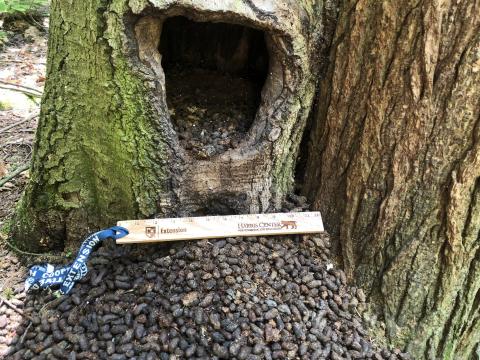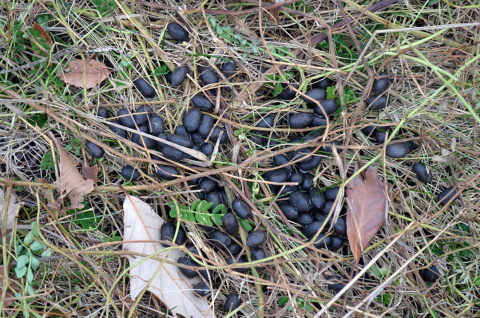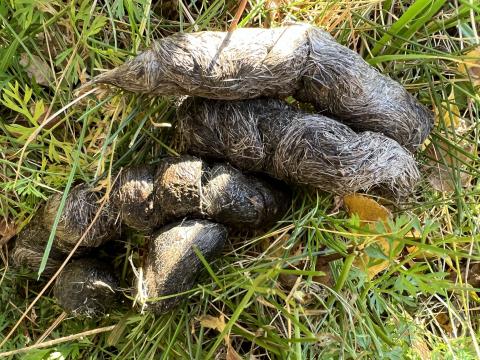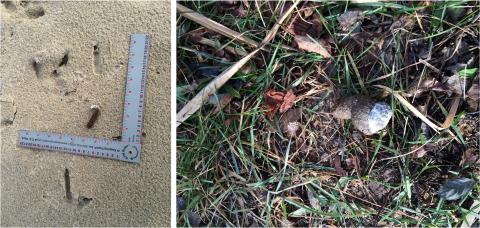Whose Scat is That?
My daughter has just reached the age at which poop becomes tremendously funny, and while I certainly get a chuckle out of her scatological humor, when it comes to wildlife, there’s much more to poop than silly jokes. It’s a sign left behind by every species of wildlife, and different wildlife have different poop, or scat. Learning how to identify wildlife by their scat is a great way to learn more about wildlife behavior – where they travel, how they communicate, what habitats they use, what they are eating, and likely much more.
Here are some of the key features to look at when trying to identify a scat:
- SIZE and SHAPE. How big is the scat? Measure both length and width. Is it the size of a grain of rice, or more comparable to your dog’s scat? Is it tubular, round, long and skinny? Twisted, straight, or J-shaped?
- LOCATION. Where was the scat deposited? Is it under a bush, or in the middle of the trail? Is it on top of a rock, or collected in a large pile at the entrance to a small rock pile?
- CONTENTS. Can you tell what is in the scat? Is there hair or bone? Is it dense or loose? Does it look like plant material? Is it filled with cherry pits? PLEASE NOTE: poke poop at your own risk! Raccoon poop can contain a roundworm that can be dangerous to people.
Here are a few photos to get you started..

Porcupine spend much of their time in dens, which can be in rock outcroppings, tree cavities, or downed logs. Scat often collects in large piles at the entrance to their dens. Their scat and urine have a very distinct piney and musky smell. The scats irregular tubes and pellets and are ¼ - ½ inch in diameter and ½ - 1¼ inch in length.

Deer pellets can be highly variable, but the most common form are pellets. There is often a dimple at one end and a point at the other. They are 3/16 – 5/8 inches in diameter and ½ - 1¾ inches long. Deer tend to scat wherever they are, so you will often find piles deer pellets scattered across the landscape.

Coyote scat will vary tremendously based on diet. The typical scat will have tapered, pointy ends. They tend to deposit their scat in obvious places, often elevated (on a rock, for example), in the middle of a trail or road, often at a trail junction. You can often see obvious hair and bones in the scat. Their scat is 3/8 – 1 3/8 inches in diameter and 5-13 inches long. Generally, scats greater than ¾ inch in diameter will rule out fox scat, which can look very similar in form, placement, and contents.

Turkey scat is interesting because you can sometimes tell whether it is a male or female turkey based on the shape of the scat. Males and females have differences in their intestinal systems, which in turn causes different shaped scats. Male scat (left) tends to be straighter or j-shaped tubes, while female scat (right) tends to be tight, twisted clumps. Like most bird scat, turkey scat usually shows some white, which is uric acid (birds don’t pee, so they excrete nitrogenous waste in the form of uric acid).
You can learn more about wildlife and their scat by watching the recent NH Woods and Wildlife Live “Whose Scat is That?”. This handy card from NH Fish and Game is a great pocket resource when in the field. If you want to dive even deeper, wildlife track and sign field guides are a great resource for learning even more.
-- Winter 2022 Taking Action for Wildlife Newsletter


